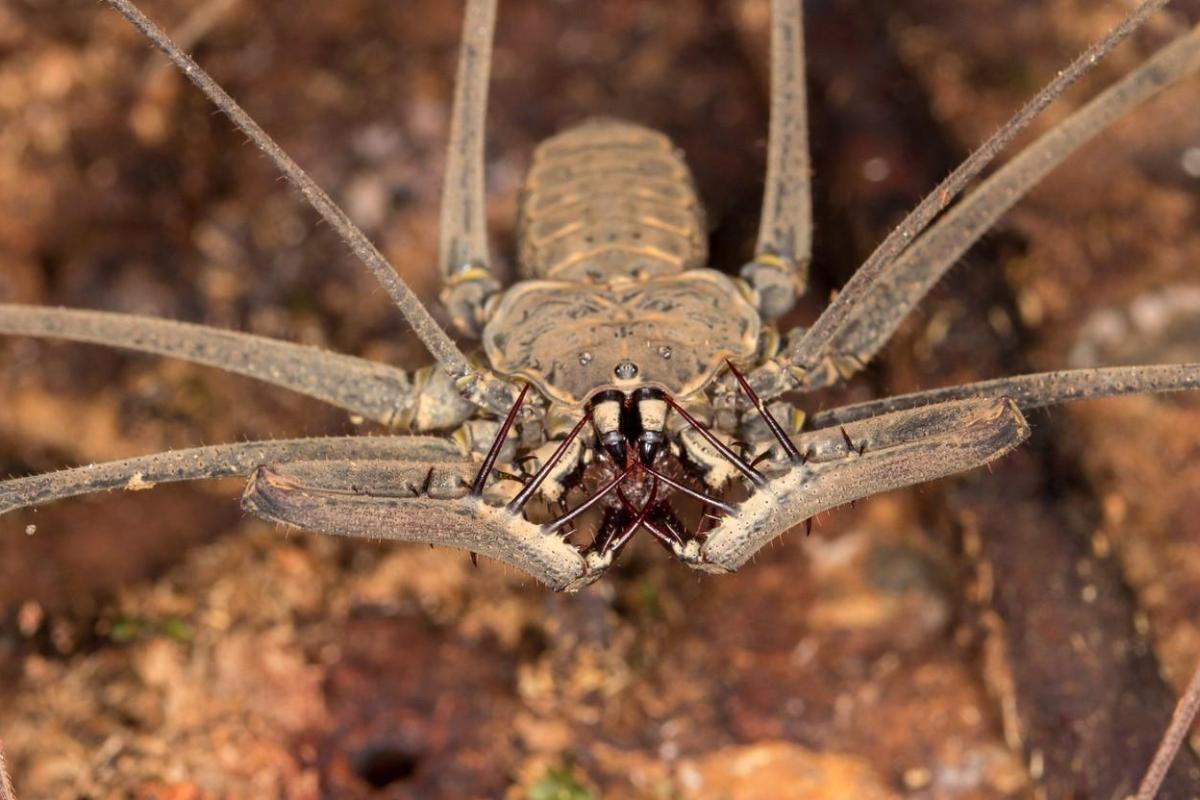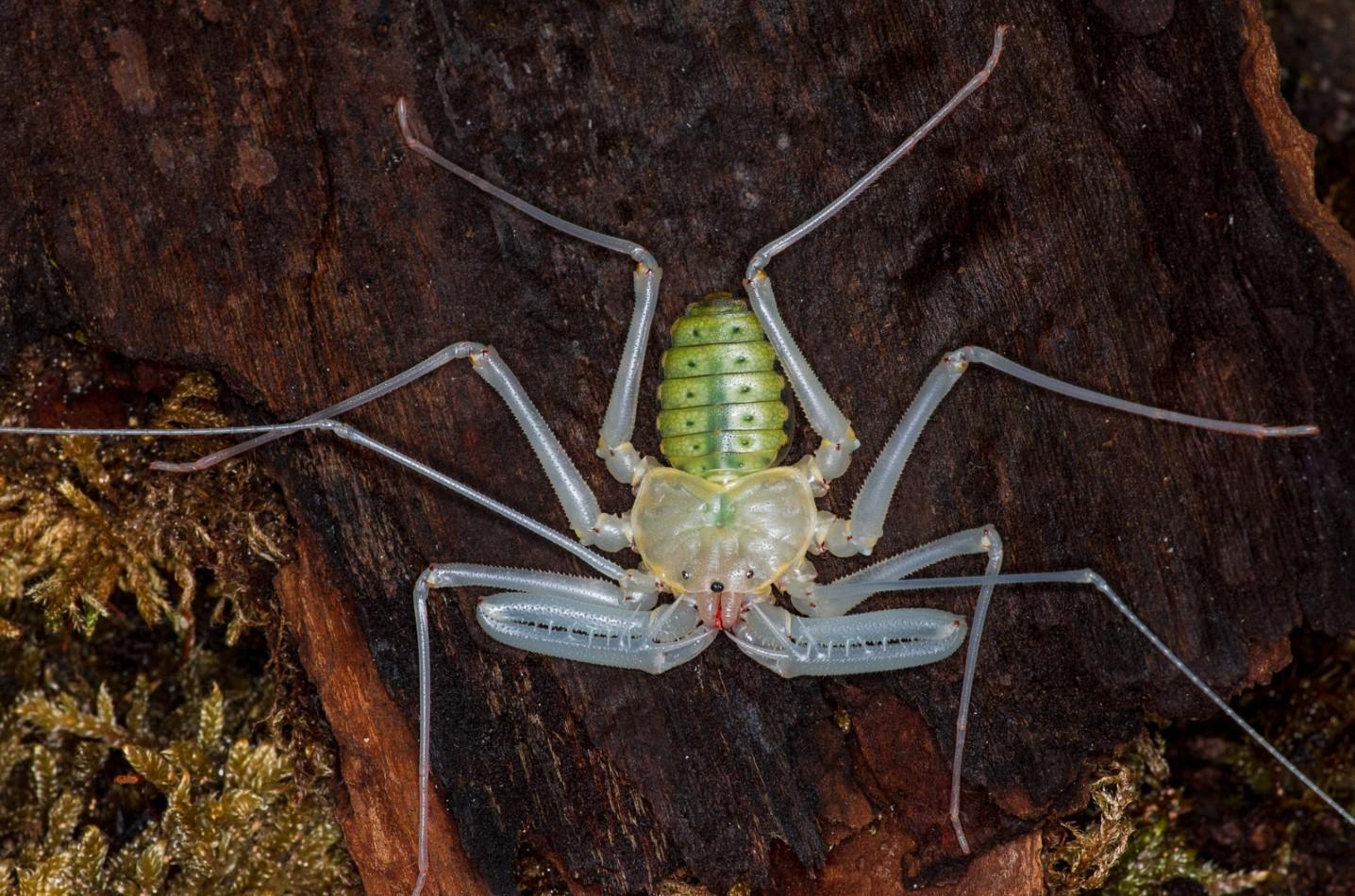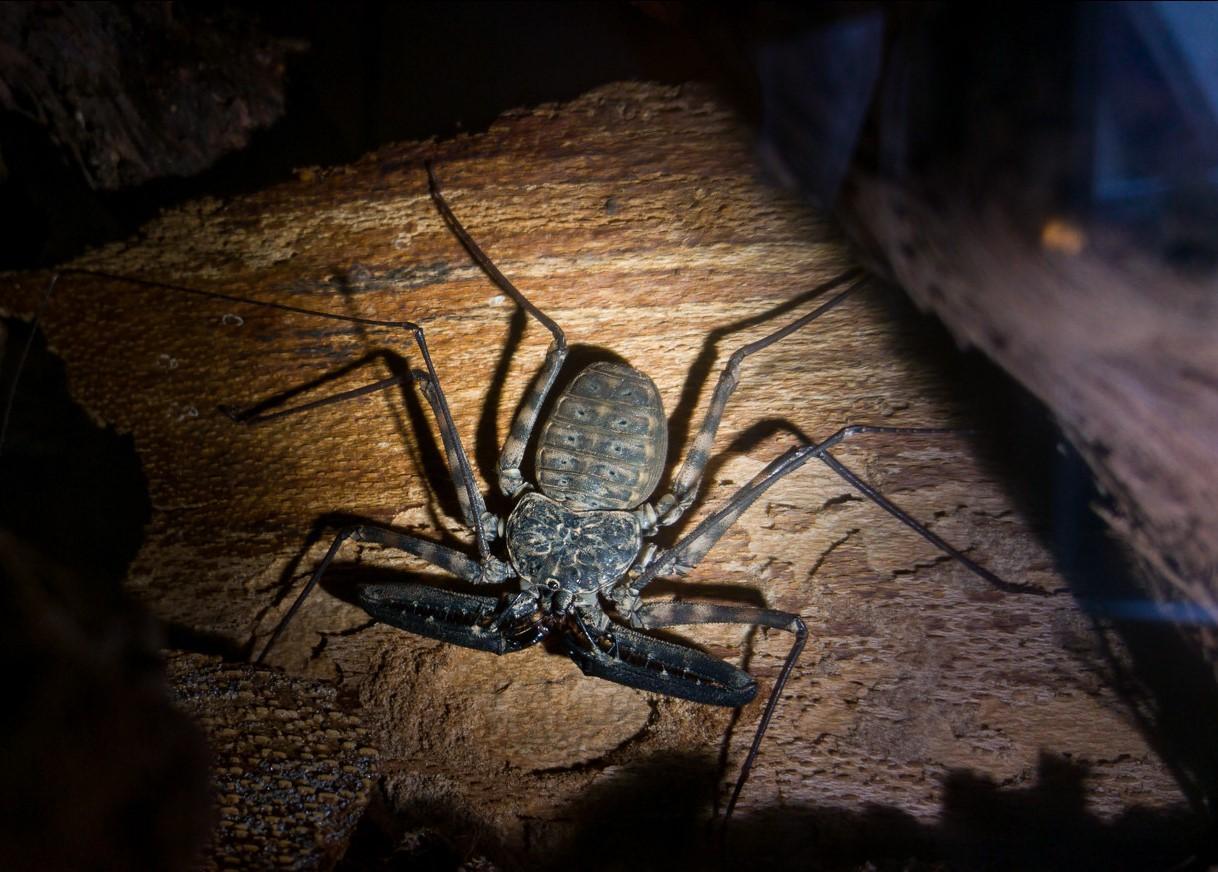Whip Spider Definition and Types


Amblypygi is an order of arachnid arthropods that are commonly known as whip spiders or tailless whip scorpions. These common names imply they are either types of scorpion or types of spider. Perhaps confusingly, they are neither. Whip spiders are a different type of arachnid, despite certain similarities to both scorpions and spiders. Not as well known as their arachnid cousins, whip spiders have a flattened body and a pair of legs that are modified into long sensory whips. It is from these appendages that they derive their name. Although they may appear very dangerous, the threat they pose to humans is minimal. The same can't be said for the insects, reptiles and even small birds they consume as prey.
At thedailyECO, we lean more about Amblypygi arachnids by looking at the whip spider definition and types. We discover more about their characteristics and behavior, as well as see photos of what they look like.
What are whip spiders?
Whip spiders are arachnid invertebrate animals. They are not spiders, nor scorpions. They are also not insects as all types of arachnid are often misclassified. They are one of the most primitive groups of arachnids, but also one of the least studied. This means there is still a lot to discover about their characteristics and behavior.
Reviewing the taxonomy of whip spiders we can better understand the classification of these invertebrates:
- Phylum: Arthropoda
- Subphylum: Chelicerata
- Class: Arachinda
- Order: Amblypygi
The order name Amblypygi derives from the Greek for ‘weak legs’. Due to their similarity in appearance to true spiders and scorpions, it is common to wonder if whip spiders sting. Although they have pedipalps near their mouth which can cause a kind of bite, they lack venom glands and cannot cause much harm. Although it can nip, the bite of a whip spider will not cause any serious injury.
Due to their lack of a defense system like other arachnids, whip spiders are very shy and tend to flee from threats. They much prefer to hide under leaf litter or in any available hiding place. These hiding places are important for their survival as they use them to ambush prey that is passing by their openings. They use their pedipalps to immobilize their prey. They then breakdown said prey with the use of chelicerae, i.e. pincer-like mouthparts.
A fun fact about these strange animals is that one appears in the Harry Potter and the Goblet of Fire movie. Perhaps you had seen it and did not know that it was an animal that really exists.

Characteristics of the whip spiders
Now you know the definition of whip spiders, you may want to know more about their specific characteristics. They include the following:
- Legs: whip spiders have eight legs it is for this reason they are classified as arachnids, but not all of them are used to move. The most distinctive feature of members of the Amblypygi order is that the first pair of legs is modified for tactile purposes and not for movement. These front legs are long and appear as whip-like antennae, hence their name. These front legs are equipped with many highly adapted receptors with which they can detect both chemicals and movement. They also have very large neurons inside that carry information to the nervous system so that they can respond to external stimuli.
- Movement: to move, they only have three pairs of locomotive legs, making six locomotive legs in total. These are articulated to be able to have flexibility and good mobility.
- Pedipalps: appendages that look like pincers, but are not. They are long and covered with spines which are used to capture their prey by folding the pedipalps, leaving the prey trapped and pierced by the long and sharp spines.
- Mouthparts: have strong chelicerae located near the mouth that serve to chew into smaller pieces before swallowing.
- Diet: their food is based other arthropods from different groups. These include arachnids or termites, for example.
- Body: is small, broad and flattened.
- Molting: they go through exoskeleton molting processes to which their growth is determined.
- Brain: in the brain they have structures called corpora pedunculata that are related to memory, so we can say that whip spiders have the learning ability to escape, capture prey and orient themselves.
- Habitat: live in tropical areas hiding among rocks, leaves and branches during the day to come out at night. They are known for living in humid areas.
- Communication: have stridulatory organs with which use rhythmic rubbing to make sounds and communicate information.
- Social: in general they are solitary animals, only coming together when it is the breeding season. However, there may be certain species that are more social than others.
- Color: they are generally dark in color, usually black or brown with reddish legs. A few others are light colors like white and green.

Types of whip spiders
There are around 155 species of known whip spiders, divided into 5 families and 17 genera. Next, we present some of the species so that you know how the types of whip spiders can differ.
- Tailless whip scorpion (Damon diadema): native to Africa. Its body measures 3 cm in length, but the sensory legs that correspond to the first pair are particularly long. The legs measure about 20 cm in length. One of the few whip spiders that has a social nature and gathers in communities.
- Phrynus marginemaculatus: lives on Caribbean islands with a 2 cm body and 10 cm long legs.
- Acanthophrynus coronatus: found in the humid tropical forests of Mexico. It is one of the species most used as pets. They live above the trees and rarely come down to the ground.
- Paracharon caecus: it is characterized by living in termite nests. They have the adaptations that subterranean habits imply, such as the lack of eyes and no pigmentation. It is found in West Africa.
- Paraphrynus carolynae: found in Mexico and is one of the few tailless whip scorpions that prefer a dry and arid environment.
- Weygoldtina spp.: Now that we have reviewed the existing types of whip spdiers, we want to mention a genus that is already extinct. It is known from its fossil record from Canada and England. It was 1.7 cm long.
Now you know all about Amblypygi arachnids and the types of whip spiders, you may want to learn about other types of arthropods. You can do just this with our articles on how do insects breathe and do mosquitoes have teeth?

If you want to read similar articles to Whip Spider Definition and Types, we recommend you visit our Biodiversity category.
- Beatty, R., Beer, A., & Deeming, C. (2010). The book of nature. Great Britain: Dorling Kindersley.
- Science Direct. (n.d.) Amblypygi: an overview. Retrieved from: https://www.sciencedirect.com/topics/agricultural-and-biological-sciences/amblypygi








